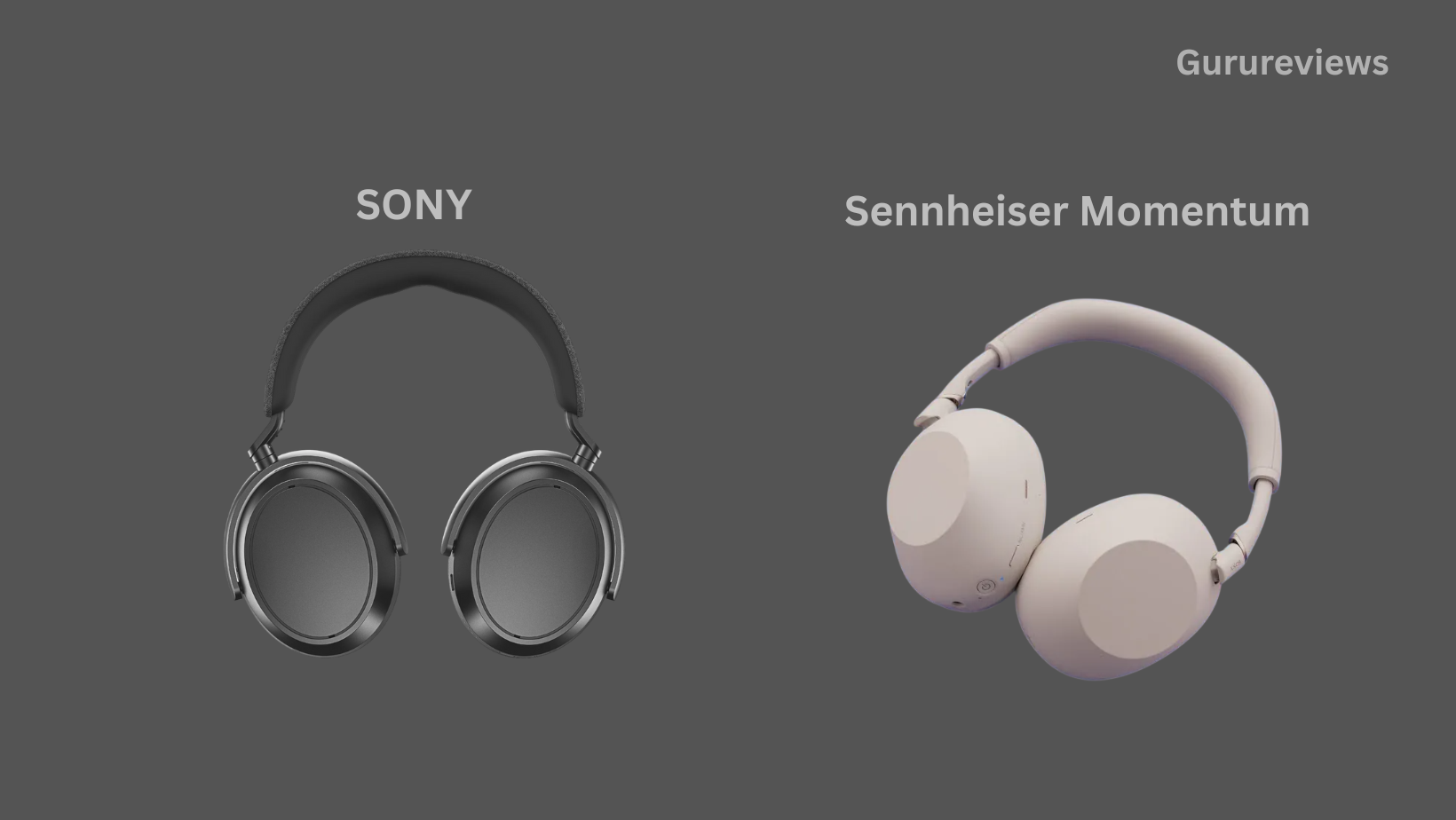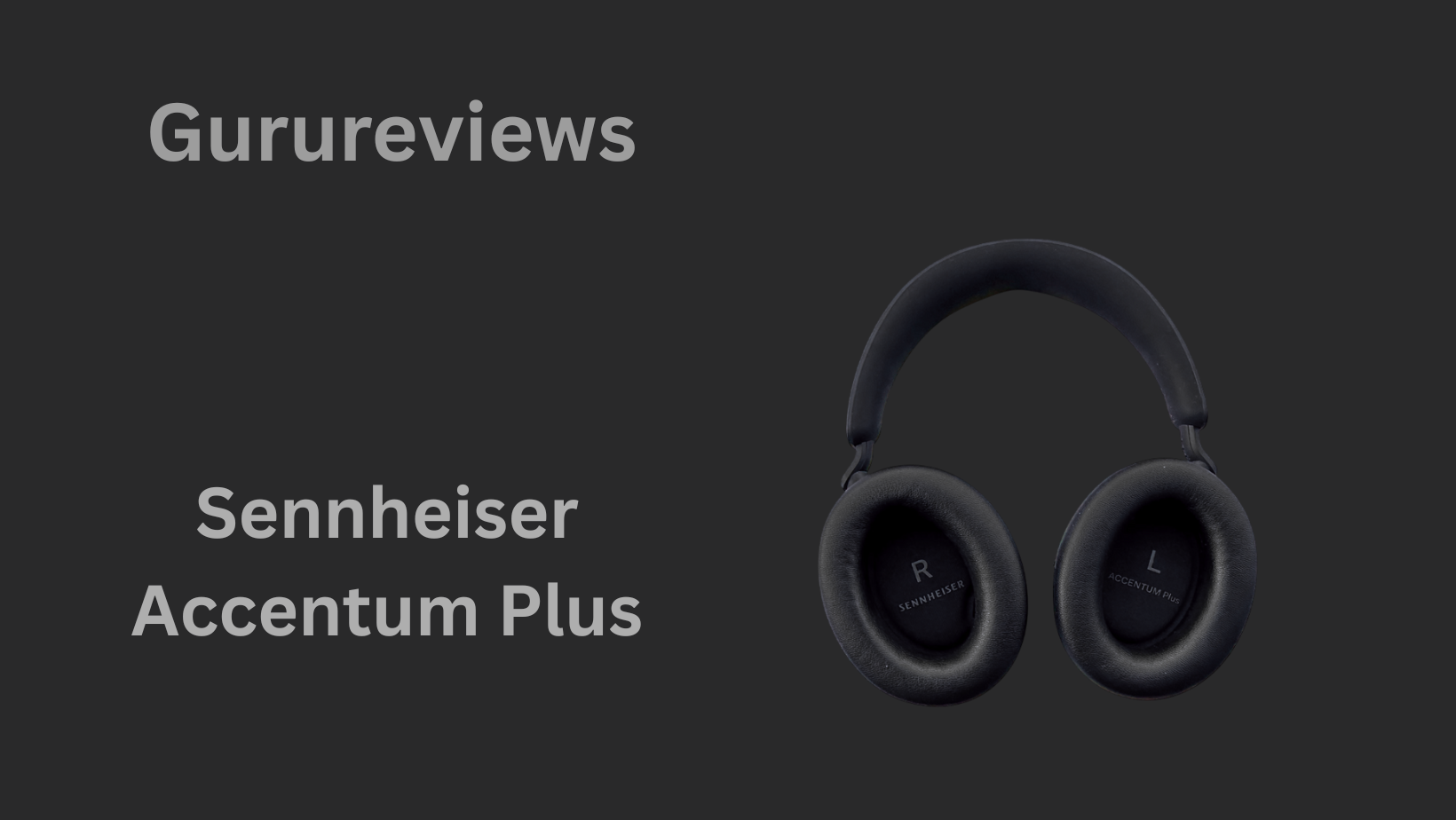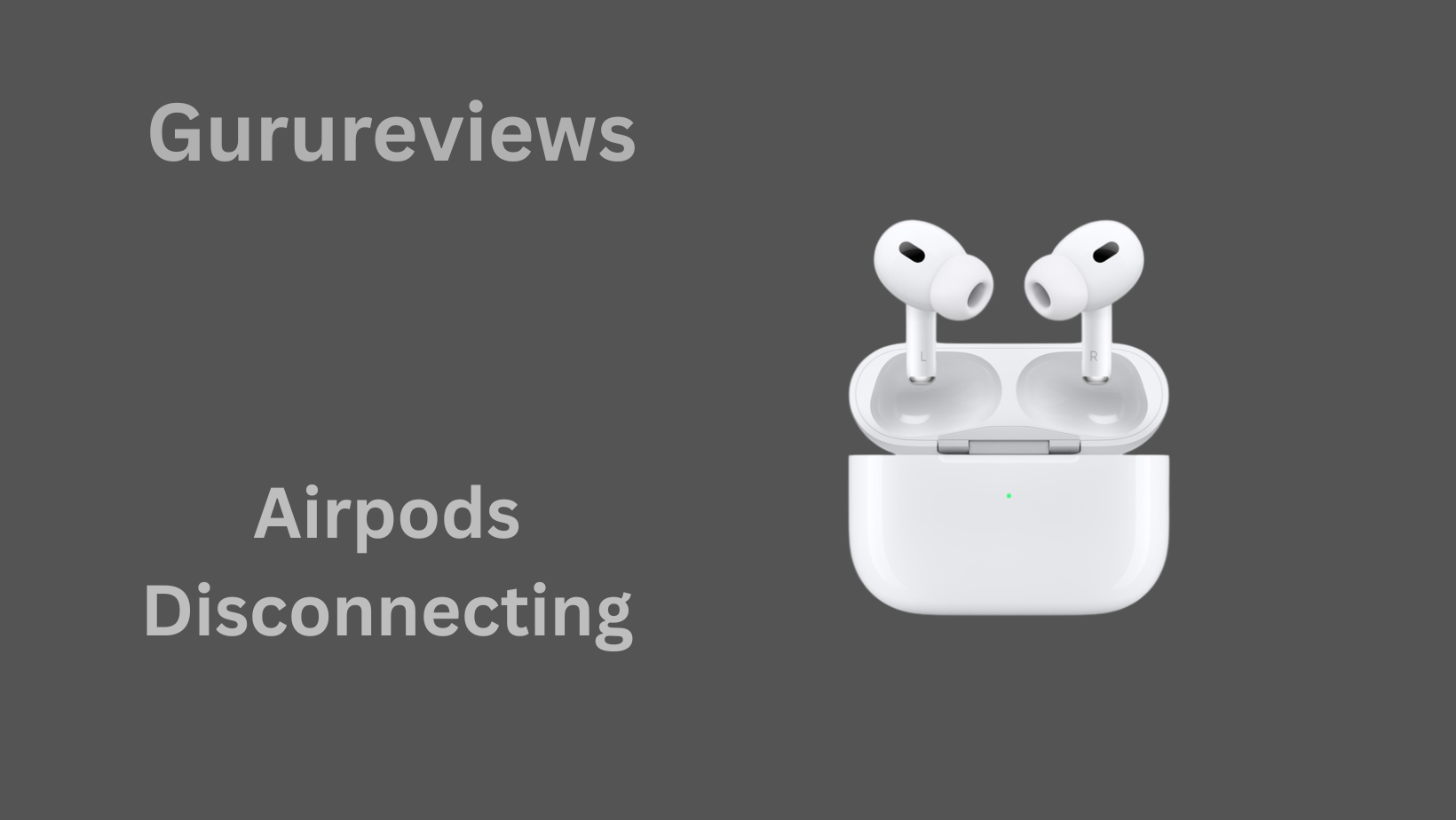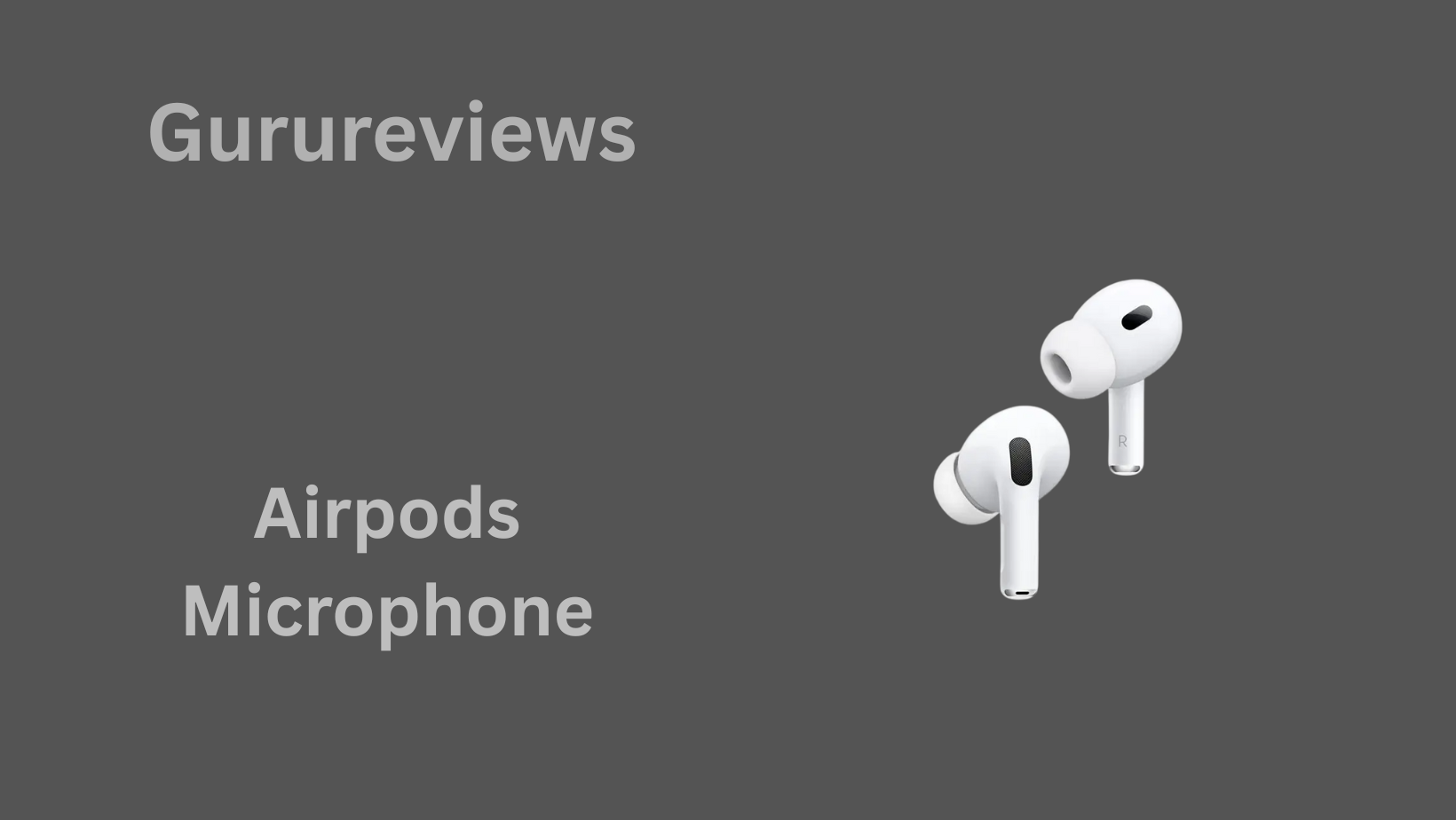The Sony WH-1000XM6 and the Sennheiser Momentum 4 are the two best names when it comes to high-end noise-cancelling headphones.
Both offer world-class audio, advanced features, and comfort designed for long listening sessions. But which one truly gives you the best value in 2025?
In this detailed comparison, we break down everything—from design, comfort, and sound quality to ANC, battery life, and resale value—so you can make the right choice without regrets.
Design & Build Quality: Style, Durability, and Portability
The first impression is important when buying high-end headphones, and the Sony WH-1000XM6 and Sennheiser Momentum 4 both have unique designs that give them their own personalities.
Sony WH-1000XM6: Sleek, Lightweight, Travel-Ready
Sony continues its tradition of minimalist elegance with the WH-1000XM6. The matte finish, available in black and platinum silver, gives it a modern and refined look. What stands out immediately is how lightweight it feels at just around 250 grams, making it ideal for long commutes or all-day wear.
Sony’s foldable design is a major win for portability—it neatly collapses into a compact case, perfect for travelers or on-the-go users.

The build quality combines high-grade plastic with metal-reinforced sliders, ensuring both durability and flexibility. The ear cups rotate flat and tilt just enough to adapt to different head shapes comfortably.
Sennheiser Momentum 4: Premium Feel, But Less Portable
Sennheiser took a bold step with the Momentum 4, moving away from the classic retro styling of the Momentum 3 and opting for a cleaner, more modern design. The fabric-covered headband and subtle branding offer a premium and mature aesthetic.
Although slightly heavier at around 293 grams, the Momentum 4 doesn’t feel bulky on the head. However, it does not fold—and that’s a downside.
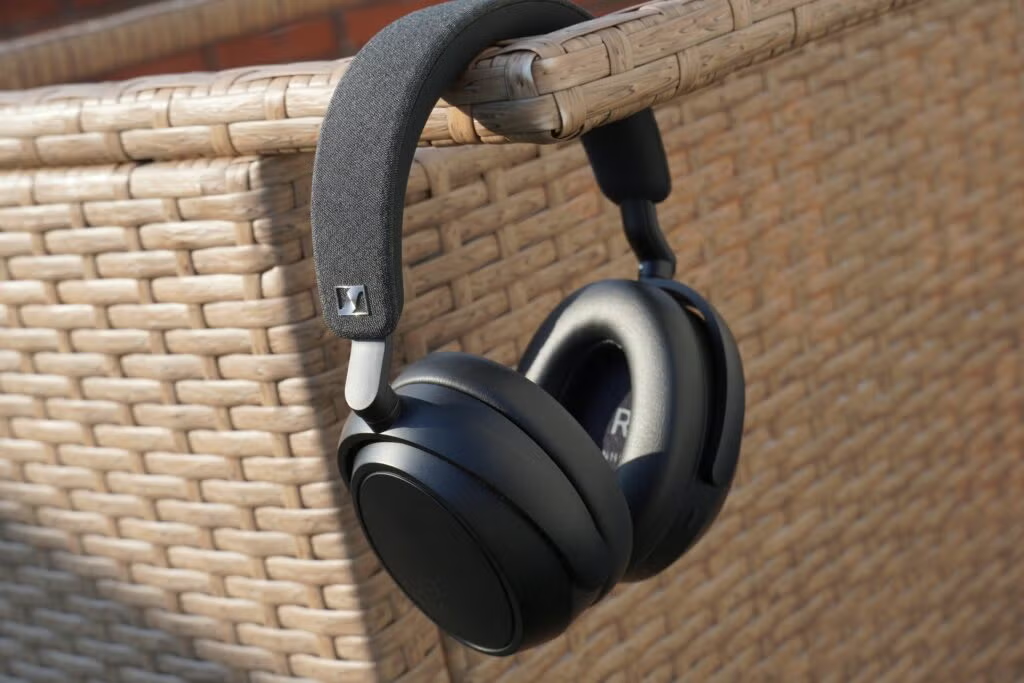
The ear cups swivel flat, but the headband stays extended, which makes it a bit trickier to pack and carry compared to Sony.
Build Comparison
- Sony XM6: Foldable, lightweight, matte design, easier to travel .
- Sennheiser M4: Classy, sturdy, premium fabric headband, but not foldable .
Verdict: If you prioritize portability and modern sleekness, Sony wins this round. If you’re more about luxury design and don’t travel much, the Momentum 4 still feels more premium in hand.
Comfort and Fit: Which One Feels Better on Your Head?
No matter how great headphones sound, if they aren’t comfortable, you won’t want to wear them for long—and here’s where both Sony and Sennheiser make strong, but different, statements.
Sony WH-1000XM6: Feather-Light Comfort for All-Day Use
Sony has refined the WH-1000XM6’s comfort to near perfection. With a weight of approximately 250 grams, it’s one of the lightest headphones in its class. The padding on the ear cups is soft, cushiony, and slightly deeper than previous models, allowing your ears to sit comfortably without touching the drivers.
The clamping force is gentle—firm enough to stay secure, yet loose enough to prevent pressure buildup during long listening sessions.
The headband is wide and well-padded, spreading the weight evenly across the top of your head. Many users report wearing the XM6 for 5 to 6 hours straight without any discomfort.
Sony also added better flexibility and articulation to the ear cups, allowing them to fit a variety of head shapes and sizes with ease.
Sennheiser Momentum 4: Plush and Roomy, Built for Isolation
The Momentum 4 is a bit heavier at around 293 grams, but that doesn’t translate into discomfort. Many users love its generous ear cup padding and spacious fit, which gives your ears plenty of room to breathe.
The clamping force is slightly firmer than the Sony XM6, but the ear cushions are large and deep, creating a natural seal without squeezing your ears. The headband, although slimmer than Sony’s, is padded well and feels stable. However, some users with smaller heads report a slight looseness over time due to its broader fit.
While it doesn’t fold, the Momentum 4 still swivels flat, making it relatively easy to rest around your neck when not in use.
Real-World Fit
- Sony XM6: Ideal for commuters, casual listeners, or anyone who wears headphones for hours.
- Sennheiser M4: Best suited for users who prioritize ear roominess and passive isolation, especially in quieter environments.
Verdict: If you want a lighter, snugger fit with all-day comfort, the Sony WH-1000XM6 is the better choice. But if you like larger ear cups and plush padding for home or office use, the Momentum 4 won’t disappoint.
Sound Quality Comparison: Clarity, Bass, and Overall Performance
Sound is subjective—but when you’re paying top dollar, every detail matters. Whether you’re a bass lover, a vocal purist, or a balanced-sound enthusiast, this is the section where your final decision might be made.
Sony WH-1000XM6: Balanced with Bass Emphasis
Sony’s sound tuning has always leaned slightly toward the bass side—and the WH-1000XM6 continues this tradition. The low end is rich, deep, and present, making these headphones an absolute delight for hip-hop, EDM, pop, and cinematic tracks. However, Sony doesn’t go overboard—this is controlled bass, not boomy.

The mids are clear, with vocals sounding smooth and rounded. Instrument separation is decent, though not “audiophile-level,” and the treble is soft, avoiding harshness but occasionally lacking sparkle. If you want more detail or brightness, Sony’s Headphones Connect app lets you tweak the EQ easily.
Thanks to its LDAC codec, you also get high-resolution audio support (when using compatible devices), which means more detail and depth—especially noticeable with FLAC and lossless streaming.
Sennheiser Momentum 4: Clear, Natural, and Musical
The Momentum 4 takes a more natural and neutral approach to sound. It delivers excellent clarity, with well-defined mids and sparkling highs. Guitars, strings, and vocals feel alive and textured. If you listen to acoustic, classical, indie, or jazz, the M4 is absolutely in its element.
The bass is present but tight and controlled—less aggressive than Sony’s. It doesn’t overpower the mids, and it stays punchy enough for most modern genres. You also get customizable EQ through the Sennheiser Smart Control app, though its interface is slightly less flexible than Sony’s.
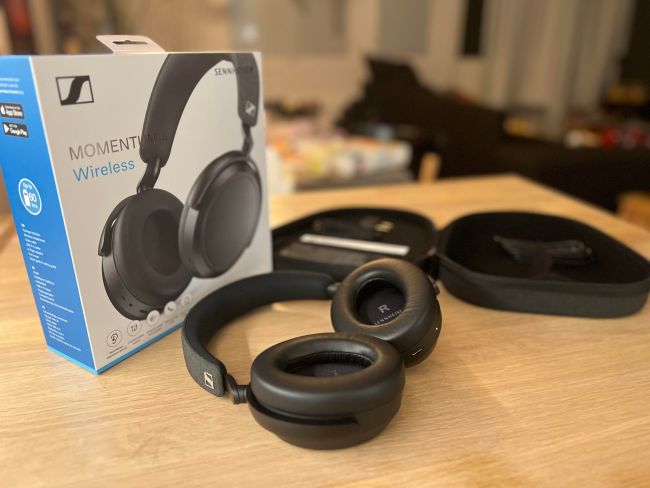
One standout feature is Sennheiser’s wide soundstage. The Momentum 4 creates a more spacious, open feel, which is rare in closed-back headphones. This makes movie-watching and instrumental music especially immersive.
Audio Breakdown
| Category | Sony WH-1000XM6 | Sennheiser Momentum 4 |
| Bass | Deep & punchy | Clean & balanced |
| Mids | Warm vocals | Crystal clear |
| Highs | Smooth | soft Detailed & airy |
| Sound stage | Moderate | Wide & immersive |
| Codec Support | SBC, AAC, LDAC | SBC, AAC, aptX, aptX Adaptive |
Verdict: If you love bass-forward sound with flexibility, the Sony XM6 is for you. If you prefer a more natural, detailed, and musical listening experience, Momentum 4 steals the show.
Noise Cancellation: Sony’s Legendary ANC vs Sennheiser’s Strong Suppression
When you buy premium headphones, Active Noise Cancellation (ANC) becomes a deal-breaker—especially if you fly often or work in noisy spaces. Both Sony and Sennheiser excel, but there’s a clear leader here.
Sony WH-1000XM6: Class-Leading Noise Cancellation
Sony has long dominated the ANC space, and the WH-1000XM6 pushes that legacy even further. Using their latest Integrated Processor V1 and multiple microphones, Sony blocks out low rumbles (like airplane engines), mid-range chatter, and even high-pitched noises like keyboard clicks.
You’ll feel a vacuum-like silence the moment you activate ANC. Whether you’re on a plane, train, or working in a busy café, the WH-1000XM6 keeps distractions at bay. The adaptive sound control also adjusts ANC based on your environment and movement, like walking or sitting.
You also get an ambient mode, letting in important sounds like announcements or conversations without taking your headphones off. It’s seamless and smart—something very few brands do this well.
Sennheiser Momentum 4: Very Good, But Not Quite Sony
Sennheiser’s ANC is impressive, just not as powerful as Sony’s. It does a great job with steady low-frequency noises, like the hum of a fan or air conditioner. However, it’s slightly less effective against sharp, unpredictable sounds, such as honking or sudden voices.
That said, the Momentum 4 still delivers a peaceful listening experience for most users, especially in indoor settings or offices. Its transparency mode is also decent, but not as refined or quick-switching as Sony’s.
Verdict: If noise cancellation is a top priority, the Sony WH-1000XM6 is the clear winner. Sennheiser is close, but doesn’t quite match Sony’s industry-leading ANC.
Smart Features & Controls: Touch, Apps, and Tech
Modern headphones are no longer just about sound—they’re about how smart and intuitive your experience is. From touch gestures to AI-powered features, let’s see who delivers more value.
Sony WH-1000XM6: Smart and Intuitive
Sony’s touch-sensitive ear cups are smooth and responsive. Swipe up or down to control volume, left or right to skip tracks, and tap to pause or answer calls. The gestures work reliably and feel natural.
But it’s the smart features where Sony truly shines. You get:
- Speak-to-Chat: Music automatically pauses when you talk, then resumes.
- Wearing Detection: Auto pause when you remove them.
- Adaptive Sound Control: Adjusts noise cancelling based on location/movement.
- Sony Headphones Connect App: Extremely detailed EQ, ANC control, and firmware updates.
- Multipoint Bluetooth: Connect to two devices at once.
Plus, with support for the LDAC codec, it delivers high-res audio wirelessly when paired with compatible devices.
Sennheiser Momentum 4: Simple but Efficient
Sennheiser also uses touch controls, and they work well—though some users report the swipe gestures aren’t quite as refined as Sony’s. Basic commands like volume control, track skipping, and call answering are all covered.
The Smart Control App lets you tweak EQ, ANC level, and sound zones, but it lacks some of Sony’s depth. It supports multipoint Bluetooth, which is a plus, and also features wear detection for auto-pause. However, it doesn’t have a speak-to-chat or adaptive ANC.
Codec-wise, Sennheiser supports aptX and aptX Adaptive, which is ideal for Android users and offers low latency, especially for video and gaming.
Verdict: Sony takes the crown for smarter features and customization. Sennheiser offers the basics and performs well, but Sony feels more futuristic and refined.
Battery Life: 30 Hours vs 60 Hours – Does It Matter?
Battery life can be a game-changer—especially if you’re someone who travels often, works remotely, or doesn’t want to charge your headphones every day. This is where the Sennheiser Momentum 4 pulls ahead with brute endurance.
Sennheiser Momentum 4: Unbeatable 60-Hour Battery
The Momentum 4 delivers a massive 60 hours of playback time with ANC turned on. That’s not a typo—it’s double what most premium headphones offer. Even with high-volume listening and occasional calls, you’ll still easily get over 50 hours on a single charge.
And if you somehow run out of battery? Just 5 minutes of charging gives you up to 4 extra hours of playback, thanks to its fast-charging USB-C support.
For users who travel, work long shifts, or hate charging often, this is a major win. Many people report charging just once a week or even less with regular use.
Sony WH-1000XM6: 30 Hours – Solid, but Average
The XM6 delivers up to 30 hours with ANC on, which is respectable and in line with most flagship headphones. Without ANC, you can stretch it to around 40 hours, but even that doesn’t touch Momentum 4.
Quick charge gives you 3 hours of playback from a 3-minute charge, which is super handy when you’re in a rush.
Sony’s battery life is enough for a few days of moderate use, but frequent travelers may find themselves needing a charger more often than with the Momentum 4.
Verdict: Sennheiser wins this round by a mile. If battery life is a top concern, the Momentum 4 is the clear leader, offering twice the runtime of the Sony XM6.
Call Quality & Microphone Performance: Clarity in Noisy Environments
Taking calls on headphones is now the norm—whether you’re on Zoom, WhatsApp, or just walking outdoors. So, how do these two perform when it comes to voice clarity, background noise handling, and mic reliability?
Sony WH-1000XM6: Crystal Clear in Any Setting
Sony invested heavily in microphone technology for the WH-1000XM6. It uses four beamforming microphones, combined with AI-based noise reduction and bone-conduction sensors, to isolate your voice from environmental noise.
Whether you’re in a busy café or walking down a windy street, callers on the other end will still hear you. In real-world testing, the XM6 consistently outperforms most competitors—even in noisy environments.
The wind reduction system also helps during outdoor calls, making it one of the best choices for people who take frequent calls on the go.
Sennheiser Momentum 4: Good, but Not Best-in-Class
The Momentum 4 features two beamforming microphones on each earcup that deliver respectable voice clarity in quiet environments. In an office or home setting, your voice will sound clear and natural.
However, in noisier locations, background sounds tend to bleed in more, and some users report a slight “muffled” tone during calls. There’s no AI-powered isolation or wind filter like in Sony, which means call quality takes a hit outdoors or on public transport.
It’s good—but if you rely on headphones for important work or client calls, the XM6 performs better.
Verdict: Sony takes the win in call quality and microphone performance. It’s more reliable in both quiet and chaotic environments, making it the preferred choice for business users and multitaskers.
Price Comparison: Which One Offers More Value for the Money?
The Sony WH-1000XM6 is typically priced around $399, while the Sennheiser Momentum 4 often sells for $349, making it more budget-friendly.
Both models frequently go on sale, sometimes dipping below $300. Despite being cheaper, the Momentum 4 offers longer battery life and excellent sound.
Sony justifies its higher price with smarter features, better ANC, and superior call performance. If you’re after raw value, Sennheiser wins. But if you want a more polished and high-tech experience, Sony may feel more worth it—even with the extra cost.
Resale Value & Brand Trust: What Happens After a Year?
Sony headphones generally hold their value better over time. Their WH-series has a strong secondhand market due to consistent performance, updates, and brand recognition. Sennheiser is a respected brand among audiophiles, but resale demand isn’t quite as high.
The Momentum 4 may not retain value like Sony, especially once newer models are release. If you’re thinking long-term or plan to upgrade later, Sony WH-1000XM6 will likely give you a better resale return, making it a safer bet for value-conscious users who might sell or trade up in the future.
Who Should Buy the Sony WH‑1000XM6?
Buy the Sony WH-1000XM6 if you need class-leading ANC, crystal-clear call quality, and a premium smart experience. It’s perfect for travelers, remote workers, or daily commuters who want top-notch noise isolation and intuitive controls.
If you’re someone who values customization, multi-device connectivity, and smart features like Speak-to-Chat or adaptive noise canceling, Sony is hard to beat. While slightly pricier, it delivers a polished, all-around package.
If sound quality and battery life aren’t your absolute top priorities, the WH-1000XM6 is a more futuristic, well-rounded pick that feels worth every dollar.
Who Should Go for the Sennheiser Momentum 4?
If you’re after exceptional battery life, natural sound quality, and a comfortable listening experience, the Sennheiser Momentum 4 is a fantastic choice. It’s ideal for music lovers, audiophiles, and long-session listeners who care more about soundstage and musical detail than smart tricks.
With up to 60 hours of playtime, it’s perfect for travelers or users who hate charging often. While the ANC and call features don’t match Sony’s level, everything else feels premium and reliable.
For its price, it offers tremendous value—especially for those who prioritize clean, immersive sound over tech gimmicks.
Final Verdict: Which Headphone Wins in 2025?
It’s a close race, but it depends on what you value most. The Sony WH-1000XM6 wins in ANC, call quality, smart features, and comfort. It’s perfect for tech lovers and frequent travelers.
The Sennheiser Momentum 4, however, is unbeatable in battery life and delivers one of the most natural, enjoyable sound profiles for music. If you want a smarter headset, go for Sony.
If you wish for immersive audio and longer playtime, go with Sennheiser. Both are excellent—but for all-round daily use in every environment, the WH-1000XM6 edges slightly ahead in 2025.
FAQs:
Which one has better noise canceling?
Sony WH-1000XM6—it’s industry-leading in both low and high-frequency ANC.
Can I use both for calls?
Yes, but Sony is clearer in noisy environments.
Which is better for long travel?
Sennheiser Momentum 4—with up to 60 hours of battery life.
Are both foldable?Only Sony folds. Sennheiser lays flat but doesn’t fold inward.
